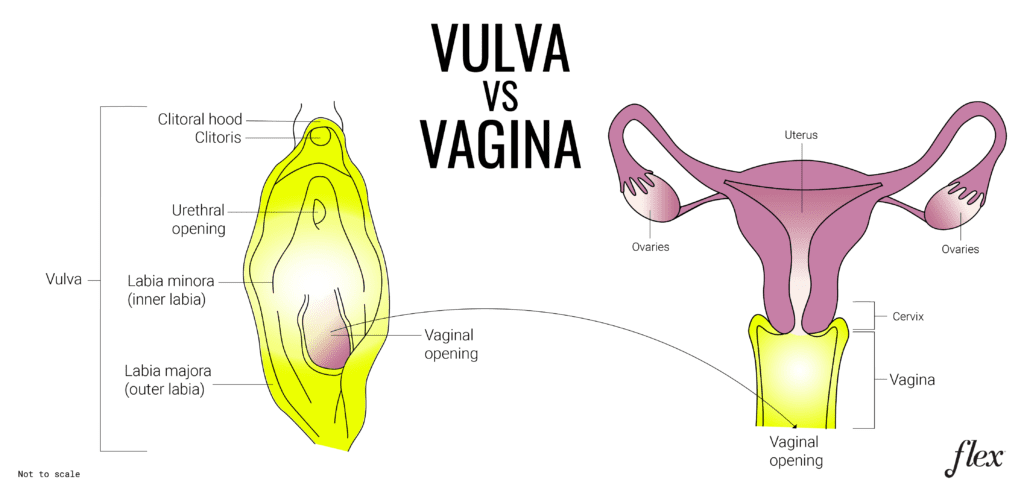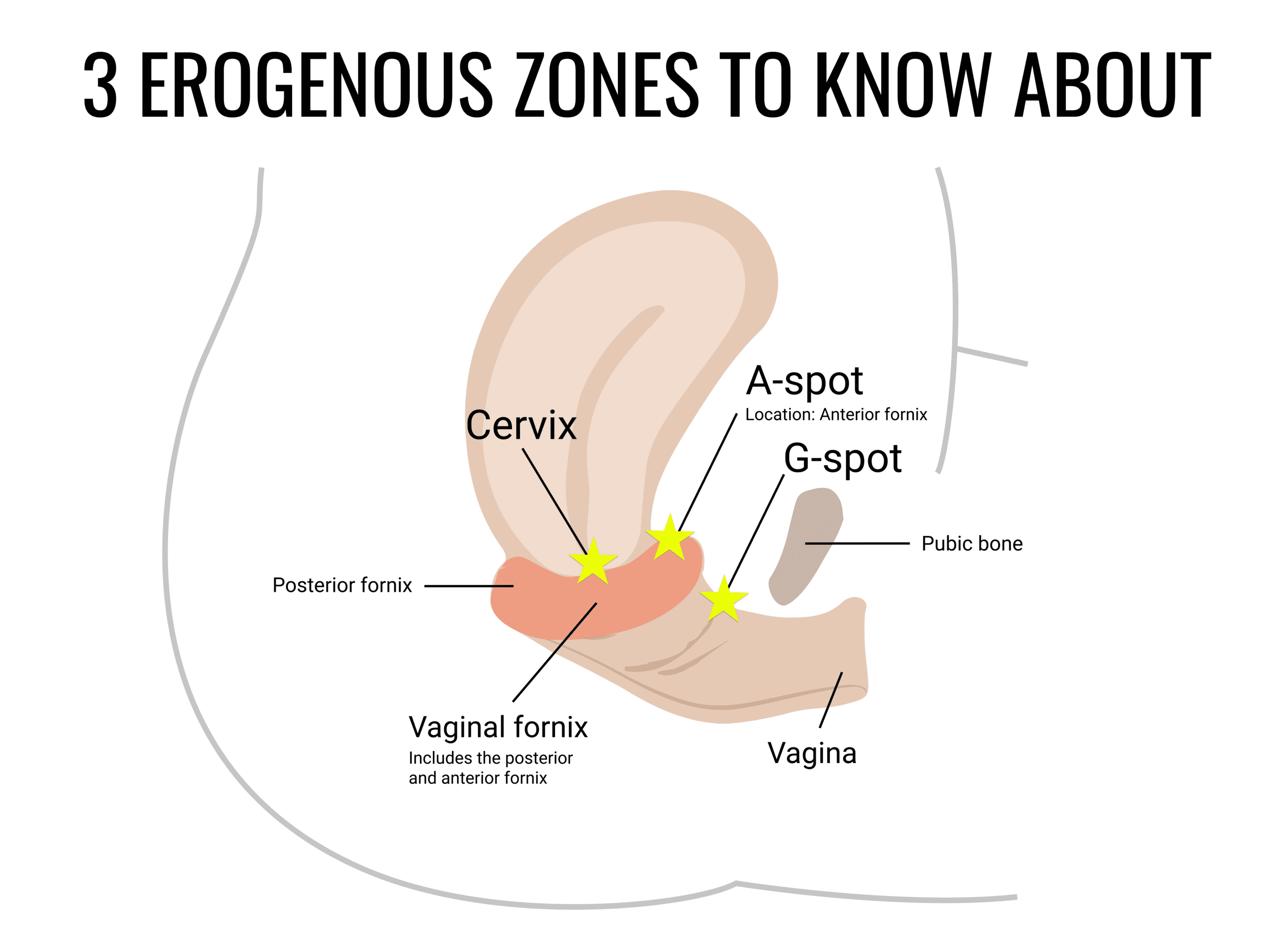How deep is a vagina?
You let it out, honey. Put it in the book:
“Somebody wrote in that book that I’m lying about being a virgin ‘cause I use super-jumbo tampons. But I can’t help it if I’ve got a heavy flow and a wide-set vagina.”
We’ve studied the boundless reaches of outer space and the nethermost trenches of the ocean, but one of the biggest mysteries (so big, it’s full of secrets) still remains one of Google’s most heavily trafficked topics. The vagina is incredibly elastic and can stretch to accommodate menstrual products, phallic objects, sex toys, and even small children.
You might as well tack a pink mini-skirt onto this sly sovereign because it could certainly withstand the bleak social facade of cold, shiny, hard plastic. So why do its ambiguous dimensions still remain an alluring question mark? Does the limit really not exist?
As the almighty Regina George would say, “Get in, loser.” We’re about to deliver a crash course on the REAL Queen Bee, who embodies strength that comes in every size and always defies the norms.
So just how deep is a vagina?
For starters, let’s venture back to basic anatomy. While it is widely assumed that the vagina is the external structure visible to the naked eye (no pun intended), it is actually located inside the body from the canal to the cervix.


Various forms of research have been conducted through the years to determine the average depth of the vagina prior to a person’s body having undergone circumstances that may have altered its shape. According to an older study from 2006, the average length of the vaginal canal is around 2.5 inches (6.35 cm), with a range of 1.5-3.7 inches (3.81-9.4 cm).
The most commonly used measurements can be credited to William H. Masters and Virginia E. Johnson, who have been widely recognized for their contributions to sexual, psychological, and psychiatric research in the 1960s. During their studies, they looked at 100 people who had never been pregnant and found that vagina lengths, unstimulated, ranged from 2.75 inches (6.9 cm) to about 3.25 inches (8.3 cm).
What causes a vagina to change in size?
The expanding and contracting walls of even the deepest vaginas allow for changes in both length and width. This is because its elasticity, similar to the walls of the stomach, contains rugae which allow the vagina to collapse and expand depending on any of the below factors:
Sexual pleasure & arousal
When a person is aroused, a vagina’s length can increase to almost double its original size, from an average of 2.75 inches to up to 4.75 inches (12.1 cm) from the entrance to the cervix. Regardless of how long the vagina is, there is no scientific evidence showing that length is a contributing factor in heightened sexual satisfaction pleasure. While the depth of the vaginal depth does vary from person to person, it is entirely possible to experience peak pleasure (yep, the big “O”!).
For example, G-spot stimulation shouldn’t be affected as this spongy tissue is typically found within a few centimeters along the front wall of the vagina. Cervical orgasms for most penis-in-vagina partners can also be reached with no issue since the average penis is 4.7 to 6.3 inches.
Other erogenous zones, like the A-spot, are still able to be reached in both short and long vaginas, with the key component being deeper penetration. Certain positions, like doggy style, are a great way to easily reach the cervix and the A-spot, while toys and hands are always an option for added assistance.


How Deep is enough during sex?
During sexual arousal, the vagina can expand and accommodate a variety of sizes comfortably. It is important to communicate with your partner and prioritize comfort and pleasure over a specific depth measurement.
Straining from Constipation
Forceful bowel movements can impact vaginal size because the front wall of the rectum and the rear wall of the vagina (rectovaginal septum) are connected. When chronic straining takes place while passing stools, a posterior vaginal prolapse (called a rectocele) can occur. The extreme pressure can weaken or tear the tissues between the rectum and vagina, causing the rectum to push into the vaginal wall.
If you experience infrequent bowel movements (less than three times a week), it’s best to consult a healthcare professional, as constipation symptoms can vary from person to person.


Childbirth
The vaginal canal and the opening of the vagina can stretch substantially to accommodate the passage of a baby. After childbirth, the vaginal canal usually begins to tighten within a few days.
Depending on pelvic muscle strength, the vagina should return to almost its exact pre-birth shape about six months after delivery.
Christopher Tarnay, MD, director of the division of female pelvic medicine at the UCLA Medical Center, coined the term “genital hiatus” to describe the vaginal opening, which only slightly changes after vaginal deliveries. “People who are able to contract the pelvic floor muscles can increase or decrease the size of the hiatus,” he says. “Increasing pelvic floor muscle tone can reduce looseness.”
Surgery
Few procedures, including hysterectomies and pelvic reconstructive surgeries, have been proven to shorten the length of the vagina by about 0.63 cm and 0.22 cm in size, respectively. The shortening length may vary according to the type and severity of the hysterectomy performed.
Aging & Menopause
Aging can affect the appearance and shape of the vulva and vagina. Hormonal changes may cause thinning of vaginal tissues due to a loss of collagen and elastin. The labia majora may also lose volume.
Additionally, due to the body’s extreme fluctuation of hormones experienced during menopause, the vagina may shorten and become more narrow. Some instances of tightening near the opening have also been reported, which can lead to feelings of pain, burning, or soreness during intercourse.
Age is a beautiful, natural process. While there are treatments available to counteract changes, such as kegel exercises or lubrication, it’s totally okay to let your vagina age naturally!


Kegels, kegels, kegels!
At some point in their lives, vagina owners have likely been given the timeless advice, “Do your kegels!” Believe it or not, this old adage actually contains some truth. Regular kegel exercises strengthen the pelvic floor muscles that support the bladder, uterus, and rectum. This is important because these muscles weaken over time.
Incorporating kegels into a regular fitness routine not only promotes overall pelvic wellness but also offers a natural and non-invasive means to enhance the tone and strength of the vaginal muscles. Improved blood circulation to the pelvic region may increase vaginal tightness.


The deepest vagina rumors: DEBUNKED
In the grand tapestry of urban myths, there exists an entire reservoir dedicated to one of the most commonly misunderstood wonders of the human anatomy (no, not the Burn Book). As it turns out, not everything you hear about your heavy flow and “wide-set vagina” is accurate, so try not to panic as we clear the air on some major misconceptions:
The rumor: Will too much sex cause my vagina to permanently stretch?
The truth: No, not at all.
There is a common misconception about vaginas losing their shape over time. During sex, the vagina naturally lubricates and stretches. However, it will always return to its original shape due to elastic fibers in the vaginal walls. No matter how much sex a person has or who they have sex with, the vagina will not permanently stretch out.
The rumor: I think I popped my cherry using a Super tampon. Does that mean I’m no longer a virgin?
The truth: Not even close!
First off, just because you use heavy menstrual products does not give merit to having a “wide-set vagina,” in Mean Girls-speak. According to health expert Lauren Streicher, there is really no way of knowing your vagina is wider than average. However, body parts are different sizes for different people, which could lead some to have a wider (or more narrow) vagina than others.
With that said, nothing (not even the use of super-jumbo tampons) will cause a person to lose their V-card, aside from the act of sexual intercourse.
Breaking your hymen, which is a thin piece of tissue located at the bottom of your vaginal opening, may commonly be misassociated with losing one’s virginity due to the mild bleeding or discomfort that can occur once it is stretched open or “popped.” This can happen under various circumstances, including physical activity like riding a bike or putting something up your vagina (like a tampon, finger, or sex toy).
The rumor: Can using tampons be harmful to my vagina?
The truth: Sometimes, yes.
That painful, dry feeling you get when you remove a tampon at the end of your period could be a red flag from your body. According to leading health specialist Dr. Shirin Lakhani in a recent interview with Cosmopolitan UK, using tampons with a higher absorbency toward the end of your period may cause damage to the membrane of the vagina, leading to abrasions upon removal.
Switching to safer menstrual products, like the Flex Disc or Flex Reusable Disc, is not only much more sustainable for the environment but more comfortable while leaving your vaginal canal totally unobstructed!
The rumor: Will menstrual products get lost if I have a ‘long vagina’?
The truth: Not exactly…
Foreign bodies cannot get “lost” in the vagina. The vagina is shaped like a cul-de-sac, and the cervix acts as a gate that only opens during childbirth or to allow period blood or semen to pass through.
If you’re having trouble retrieving an object, it could be due to various factors such as positioning, finger length, or changes in cervix height. Be sure to seek medical help promptly if you cannot retrieve the object.
Yes, your vagina and vulva are completely normal!
Lopsided labia? Deep vaginal canal? Extruding clitoris? Guess what? IT’S ALL NORMAL.
It’s time to throw out the rulebook and forget the notion of cookie-cutter molds; despite what you may research or find on the Internet, vaginas come in an array of shapes and sizes.
According to an article shared by Business Insider, a 2015 study of 480 cisgender women found that 40.7% of the women interviewed said that they had some qualms with their vagina. Feeling as though your anatomy is “abnormal” is common, but just like noses and fingerprints, there is no one-size-fits-all.
Here’s to celebrating uniqueness, embracing the quirks, and appreciating the distinct charm of our own beautifully unique selves, because in the realm of vaginas, conformity is so last season!
This article is informational only and is not offered as medical advice. It is not a substitute for a consultation with your physician. If you have any gynecological/medical concerns or conditions, please consult your physician.
© 2024 The Flex Company. All Rights Reserved.


